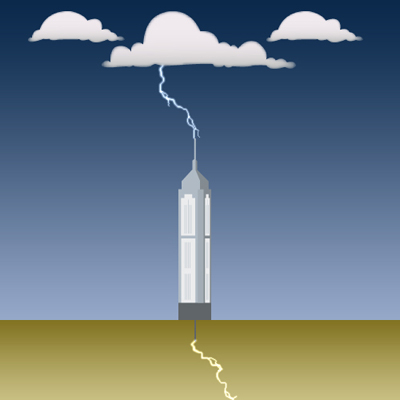Static Hazards
Sparks
Sparks can cause explosions. When flammable liquids like gasoline (petrol) are transferred from tankers to aircrafts static electricity poses a very serious hazard. Gasoline is an insulator. When it transferred from a tanker to an aircraft it rubs against the inside of the hose and builds up a lot of charge. This large amount of charge can form sparks and cause an explosion.
To prevent this from happening tankers/aircrafts use grounding or earthing devices. These are copper wires on the hose and the aircraft that draw the electrical charge away from the gasoline and into the ground/earth (hence the name grounding or earthing).
Lightning
In storm clouds water droplets collide with dust particles, ionising radiations and each other. These collisions cause electrons to be knocked of the particles and accumulate in the cloud. The negative charges collect at the bottom of cloud and induce positive charges to accumulate on the ground. Eventually, the potential difference between the cloud and the ground become so great that the negative charges from the cloud are attracted towards the positive charges from the ground. When the two charges meet a flash of lightning is produced. Lightning bolts can heat up the air to temperatures hotter than the sun this causes the air around the bolt to expand explosively producing the sound we hear as thunder. As light travels a million times faster than sound we see the lightning before we hear the thunder.
Lightning Hazards
Lightning strikes are hazardous to buildings especially tall ones like tower blocks and chimney stacks. The energy in a bolt of lightning can severely damage and burn buildings. Lightning conductors provide protection for building by providing the path of least resistance for the lightning into the earth.
Lightning conductors are a sharp pointed metal rod placed on the top of a building. As charged storm clouds induce positive charge the point of the lightning conductor becomes positively charged. If lightning strikes it will be hit the conductor (due to it being the tallest object with the positive charge), it will the travel down the rod and into earth where it will be dissipated safely.

